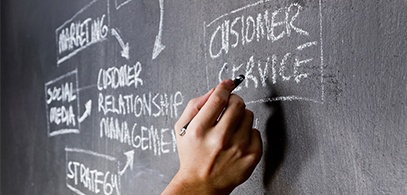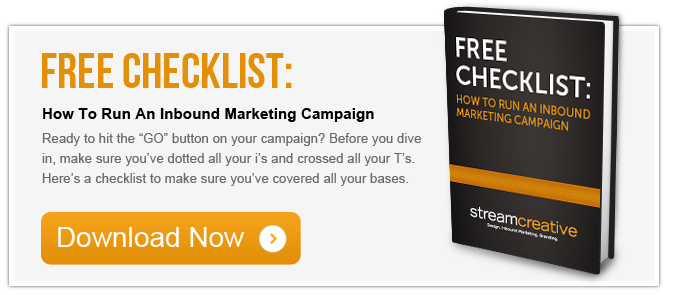 People make buying decisions much differently today than they did 15…10… even 5 years ago. Gone are the days where a cold call is an acceptable form of capturing the attention of new prospects and customers. In fact, most people don’t even like answering a phone call from a friend, much less have a conversation with someone they have not met. This is just one example of the drastic change businesses have experienced in recent years with generating leads and mapping their buyer’s journey.
People make buying decisions much differently today than they did 15…10… even 5 years ago. Gone are the days where a cold call is an acceptable form of capturing the attention of new prospects and customers. In fact, most people don’t even like answering a phone call from a friend, much less have a conversation with someone they have not met. This is just one example of the drastic change businesses have experienced in recent years with generating leads and mapping their buyer’s journey.
A common misconception in regard to generating leads online is that simply offering a “contact” form is enough to capture leads or sales from a website. Today’s savvy consumer wants to navigate the discovery process and collect information / materials on their own. This is why inbound marketing is such a critical component to a buyer’s journey and corresponding lead generation campaigns.
What are the components of a successful lead generation campaign? The buyer’s journey throughout the campaign looks a bit like a funnel. There are three important steps throughout this funnel that lead prospects through the journey to ultimately becoming customers.
Step 1: Lead Generation
Marketing strategy no longer includes the mentality of “if you build it, they will come.” Organizations can no longer rely on events, trade shows, SEO, social media, email distribution, blogging or dynamic content to drive traffic to a website. Inbound marketing strategy is a combination of all of these things. This top of the funnel step requires a marketer to consider the following:
- Are you blogging regularly and creating fresh content that can be easily found via organic search?
- Are you promoting content and engaging with your audience through social channels?
- Are you developing landing pages with contact forms for premium content pieces that require email addresses (or other contact / misc. info) in exchange for downloads?
- Does your content touch on the pain points of your perspective buyer or address a need?
Step 2: Lead Nurturing
When your lead generation efforts are successful, continuing through to the lead nurturing process is essential. This process typically includes reaching out to these newly acquired prospects via an active email campaign to distribute relevant and more personalized information that further addresses their needs and pain points. Considerations for the middle of the funnel include:
- Are you implementing a lead nurturing program – also called a “workflow or drip” (either via manual distribution or automation)? If contacts are just sitting in your database, you are likely missing big opportunities to convert them to customers.
- Do you continue to position your company to prospective leads through frequent and relevant content distribution to stay top of mind? Example: a prospect downloads an ebook or subscribes to your blog. Typically, an automatic thank you email would be triggered and then a few days to a week later, another email would be sent offering a different piece of content they might be interested in, and so on through the duration of the workflow campaign.
- What plan do you have in place for both prospects who do, and do not take action with your lead nurturing email or content distribution? It’s best to have different paths set for each.
Step 3: Customer Acquisition and Retention
Nurturing of prospects and customers shouldn’t end with the acquisition of their email or a sale. It is important to continue nurturing campaigns and custom campaigns based on interest, website actions and buying history. Keep these bottom of the funnel factors in mind:
- It is well known that the cost to acquire a new customer is much higher than the cost to retain an existing customer. Lead generation campaigns should not only focus on attracting prospects, but actively cultivate relationships with existing customers as well.
- Bottom of the funnel communications should provide an offer to learn more about your company, speak with a representative or provide a special up-sell offer.
- Are you rewarding customers for loyalty or referrals?
As you get ready to plan a campaign, be sure to clearly define the stage of the cycle you want to target as well as your key audience. Choose content and offers that are the ideal fit for that prospect or customer.
Understanding your buyer’s journey and mapping a lead generation campaign can be a critical factor in a business’ success. For minimal cost, acquiring and converting leads can be done with consistency and the right strategy. In part 2 of this blog series, I’ll take a step back and dive deeper into the process of profiling buyer personas and strategy behind mapping a buyer’s journey.





